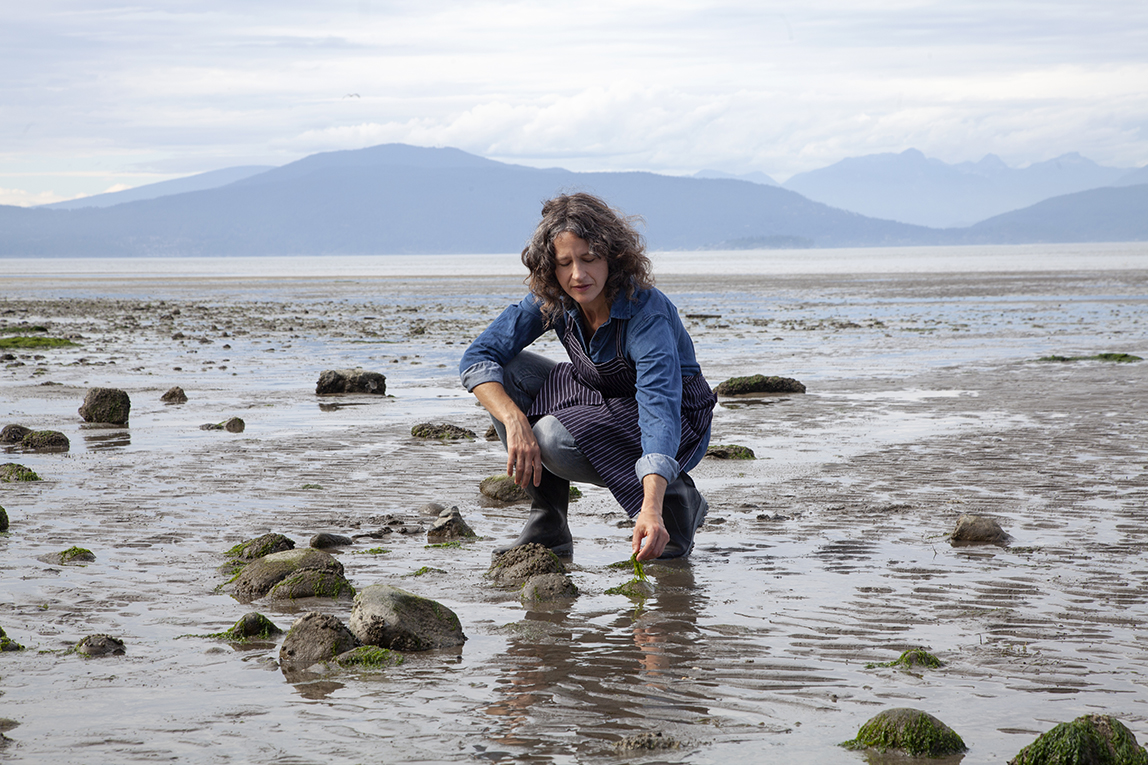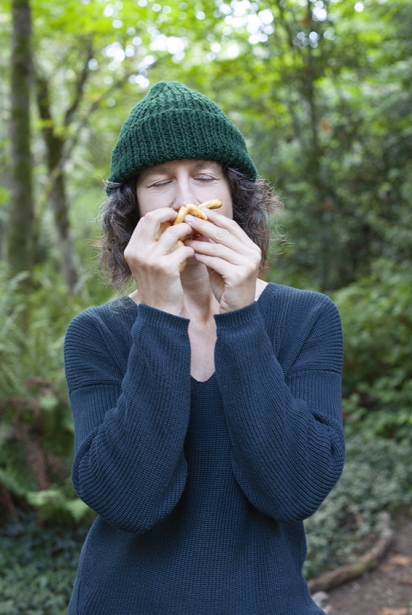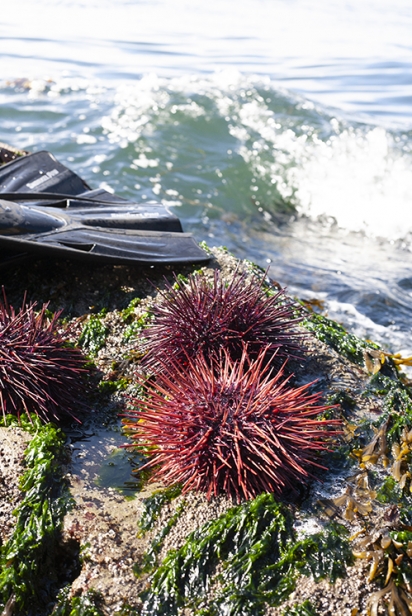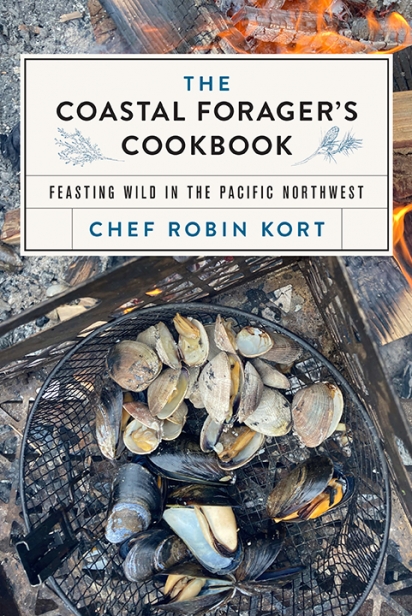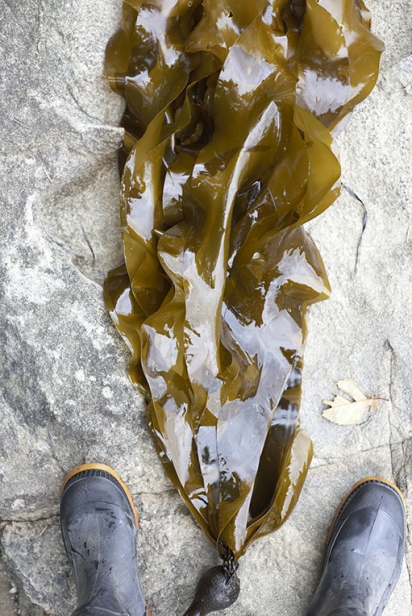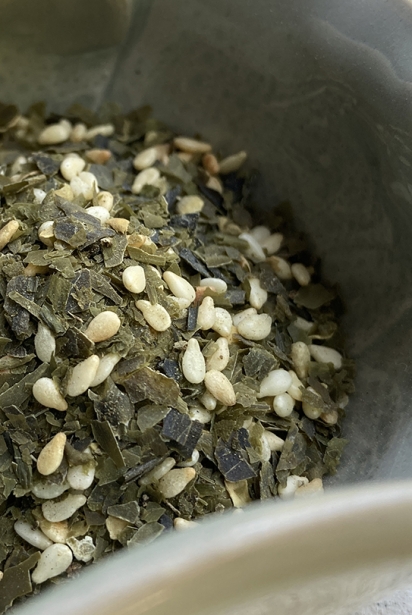Foraging for Supper
The woods and the waters that surround us are abundant with good things to eat, and no one knows that better than Robin Kort. “When I became a chef, I wanted to cook Pacific Northwest cuisine,” she says. “And you need to work with the ingredients that are here.”
That might mean savoury mushrooms or tart berries, briny seaweed or the citrusy tang of spruce tips, all of which grow wild and plentiful on the West Coast. Now Kort has taken her years of experience as the founder, forager and chef of Swallow Tail Culinary Adventures and assembled it in a new book that might just inspire you to climb into your wellies and start searching for dinner yourself.
The Coastal Forager’s Cookbook: Feasting Wild in the Pacific Northwest is a compilation of dozens of recipes ranging from Oregon grape cocktails to nettle pesto to truffle honey macaroons. It’s organized by the seasons and offers plenty of advice for new or expert foragers from the best guide you could have.
“I’m not a biologist, I’m not a mycologist, I’m a chef,” Kort says.
Secret suppers
Kort has been foraging for as long as she can remember. Although she grew up in Vancouver, her grandparents had a farm in Manitoba where she would pick berries with her mother. Her dad, meanwhile, worked in forestry and would take his daughter out to the woods, where they would identify the plants growing there.
“I loved picking everything. I loved to fill buckets full of berries and fruit,” she says. “I came by foraging quite young.”
As she grew older, she began working in restaurants such as The Keg and Las Margaritas, mainly to help put herself through school. But she never thought of cooking as “a final career,” she says. Instead, she worked in video games.
Then, 17 years ago, after working in gaming for a decade, she realized she wanted to get back into the kitchen — just maybe not a restaurant kitchen, or at least, not the kind of restaurants she’d worked in before. She began travelling and staging in Spain, Italy and Japan. And she started the Swallow Tail secret supper club. “It was based on me never wanting to work in a restaurant kitchen again or live that lifestyle,” she says.
The supper club — gourmet pop-ups held everywhere from wineries to art galleries to Kort’s own backyard — was an instant hit in a city hungry for novelty, connection and good food. “People in Vancouver wanted to sit at a long table and talk to people — it’s hard to meet people in this city,” Kort says.
“For years and years, I was just trying to find places that were interesting.”
She also collaborated with an impressive roster of chefs, including Bruno Feldeisen, best known as a judge on The Great Canadian Baking Show, Andrea Carlson of Burdock & Co and Jacob Deacon-Evans, formerly of Wildebeest and now at the Naramata Inn.
As it turned out, she’d just begun to whet our appetites.
Teaching moments
“Over the years, and especially during COVID, I was asked to teach, starting with mushrooms,” Kort says. “Slowly I’ve transitioned to doing more education and less cooking.”
About a decade ago, she began teaching classes on mushroom foraging and soon added medicinal plants and spring edibles to her roster. (She currently offers virtual and in-the-field courses on wildcrafting through her website, swallowtail.ca) Then, she says, people started asking for more — more information, more advice and mostly more recipes. “The book was designed to answer those questions and dispel some myths,” Kort says.
Take mussels. The idea that you should discard any that don’t open when you cook them is absolutely untrue, even though it’s become conventional wisdom. In fact, she says, “The mussels that stay closed after they are cooked are the liveliest ones.” Another myth: “Some people don’t know that you need to cook morels. Otherwise, they are toxic if they are raw,” she says.
She should know, because morel mushrooms are probably her favourite food to forage and cook. “It’s just so exciting finding these crazy blackened things. They have so much flavour,” she says. “Those are the ingredients that inspire people to cook.”
Mind you, she also loves wild berries, especially thimble berries. “And seaweeds. That’s one area people don’t have a lot of knowledge about. There are thousands of species of seaweed, so I try to keep the book simple and start with three.”
The book offers a seasonal guide for what to forage and when. It also offers tips for foraging safely and sustainably.
“All of the things I’ve included in the book are invasive or over abundant. Things like nettle are extremely plentiful, and if you cut it back, it actually encourages new growth,” she says. “There are tricks with each type of ingredient.”
For some ingredients, such as shellfish, it’s easy because the Department of Fisheries and Oceans sets limits and determines fishing locations. For others, there are also guidelines to follow. For instance, there are no real rules about picking mushrooms, but the conscientious forager knows not to destroy the forest floor where they live or the mycelium that connects them. “When you pick a mushroom, you are harvesting a fruiting body,” Kort notes, adding that you should always use a basket to pick fungi because it will help scatter the spores as you meander through the woods. “You are actually doing a good thing because you are spreading the spores.”
Mushrooms can also be a bit of a gamble when it comes to food safety, and it’s not one you want to lose. When Kort starts foraging for a new ingredient, she takes her time to study it, learn what it looks and smells like, to understand its growing environment before she starts cooking with it. “It’s like not moving in with a guy on the first date.”
What’s next
Writing the book has allowed Kort to share knowledge about wild foods that she’s gathered over a lifetime. Still, she understands that most of us are more likely to go foraging for dinner at the supermarket than in the actual wilderness, so she has provided a substitution so all the recipes can be made with store-bought ingredients.
Over the next few months, she will be travelling throughout the Pacific Northwest, continuing to spread the word about the book. She’ll keep teaching her classes and hosting chef collaboration dinners, all featuring recipes from the book.
One event she is especially excited about will be held at Malcolm Knapp Research Forest in Maple Ridge. It begins with a walk as guests hunt for wild mushrooms, conifer tips, wild onions and cattail shoots from the surrounding lake, forest and meadows.
And then, she says, “People just sit under the stars and eat.”
Swallow Tail Culinary Adventures
swallowtail.ca | @swallowtailtours
To find a local bookstore caring The Coastal Forager's Cookbook, visit touchwoodeditions.com/book/the-coastal-foragers-cookbook and use the shop local link.


